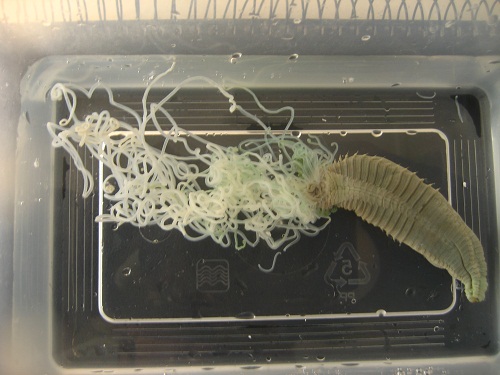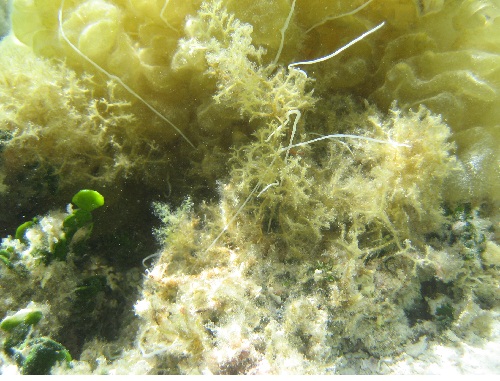Overview
Brief Summary
Comprehensive Description
Physical Description
Size and Defining Characteristics
Identification
Ecology
Distribution and Habitats
Micro-habitats and Associations
Crypsis
Life History & Behaviour
Behaviour
Focus Section
Evolution & Systematics
Phylogenetics
Systematics
Morphology and Physiology
External Morphology
Internal Anatomy
Cell Biology
Molecular Biology & Genetics
Molecular Biology
Conservation
Trends
Threats
Wikipedia
References & More Information
Bibliographies
Biodiversity Heritage Library
Search the Web
Biomedical Terms
Names & Taxonomy
Related Names
Synonyms
Common Names
Page Statistics
Content Summary | Brief Summary
Reteterebella queenslandia is a sedentary deposit feeding polychaete found at Heron Island in the Great Barrier Reef (Mather and Bennett, 1993). It is commonly referred to as a spaghetti worm because of its mass of white buccal tentacles, which it uses as sensory systems and feeding appendages (Davie et al., 2011). R. queenslandia also posses three pairs of extensively branched branchiae located anteriorly, next to the mouth. R. queenslandia feeds by passing sand particles along grooves in its tentacles towards its mouth. The particles are then sorted according to size, coated in mucus and either ingested or used to build a protective casing.
|
 |
Typically R. queenslandia use crypsis to avoid predation by larger fish. In the reef system, the only visible part is the mass of feeding tentacles that comb the sand. If these tentacles are touched, then they immediately retract back into the polychaetes hiding crevice to avoid predation. This also makes it very difficult to gain estimates of population sizes. Because of this crypsis, overall population estimates are very poor. Currently R. queenslandia is described as being endemic to Heron Island, however the complete lifecycle and dispersal capabilities are unknown. It is likely that R. queenslandia occurs throughout the Great Barrier Reef but is yet to be correctly identified at other locations. |
A fixed specimen of Reteterebella queenslandia showing mass of buccal tentacles and reduced setae before it is sectioned
|
| |
 |
|
| Reteterebella queenslandia tentacles protruding out of a clump of coral/macroalgae. R. queenslandia are found under every other boulder in the sandy inner reef area of Heron Island |
|
|
|